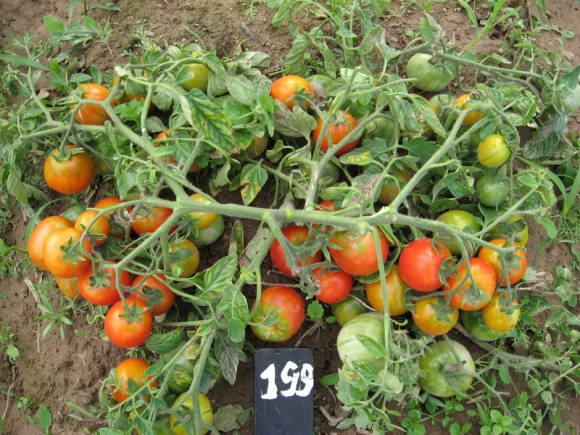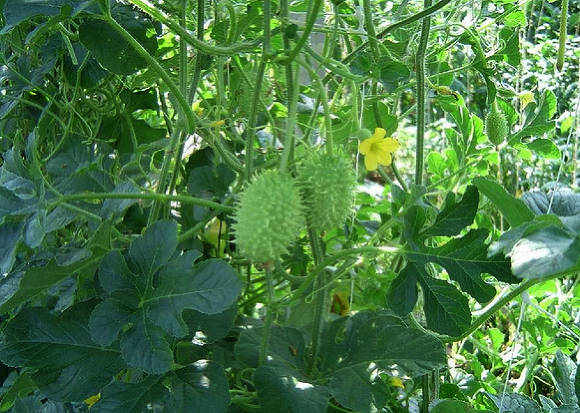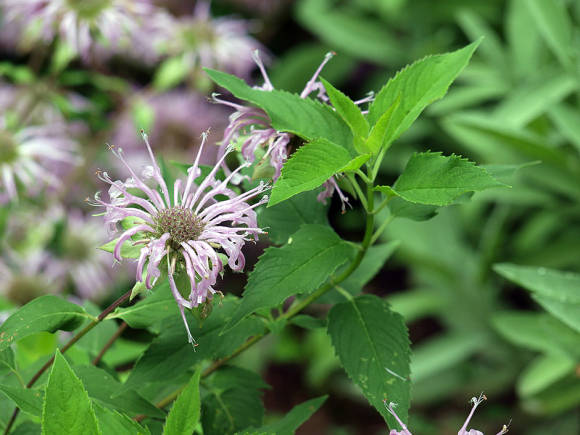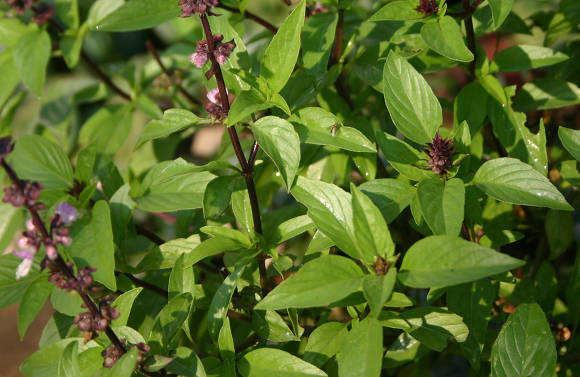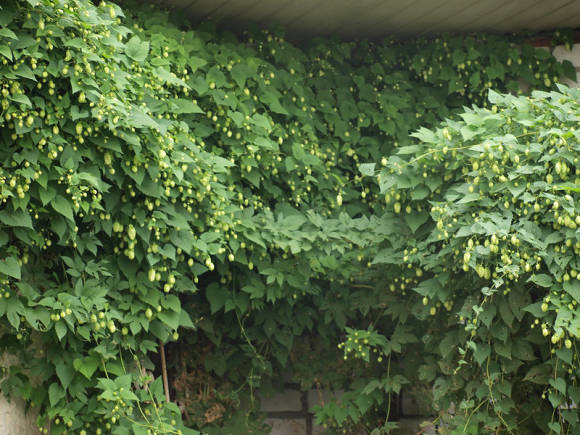
The famous Russian gardener Steinberg also devoted his attention to hops: “Hop sprouts usually emerge from the ground quite early, already in April and May, therefore, during the specified dry time, hop sprouts, which are considered very tasty, can be consumed on the table. Since hops are often found in the wild, this circumstance is of particular importance, although, in view of the indicated value of the hop sprouts, hops should be grown on a small scale in every horticulture and horticulture. In the spring, the hop sprouts are allowed to come out of the ground a little, and then they are crushed and consumed as asparagus. "
More details - on the page Hop.
Caring for this plant will not be difficult. A suitable place for him may be partial shade or a bright corner, but not in the sun itself. The soil is preferable loamy, neutral, slightly alkaline or slightly acidic. Fertile soil will help the plant grow into a real handsome man. Hops are very fond of moisture, so they need watering, but without excess. Weeding, periodic loosening and fertilization are also required.
The plant is hardy enough. Rhizomes of ordinary hops tolerate winters with temperatures down to -30 degrees.
Like all vines, hops need support if planted away from them.
Planting and caring for hops can be done even by novice gardeners. This plant is so unpretentious that it can grow without leaving at all. The only difficulty in growing hops on site is the need to control the growth of its rhizomes. To do this, you need to use improvised materials (a special grid-root limiter, pieces of slate, bricks) to build a barrier in the soil for its roots.
Hop propagation

Hop propagation is also straightforward. Most often it is propagated by vegetative methods. Fragments of rhizomes with living healthy buds are separated without digging the mother plant out of the ground. In the spring, as soon as the first shoots appear from the ground, small pieces are carefully cut out with a shovel and planted in a prepared place.
Rhizome cuttings are harvested before the start of sap flow. To do this, the rhizome is dug up, divided into fragments with living buds and planted in a new place. Such cuttings can be grown on a separate bed, and transferred to permanent residence in the fall. By the way, hops live for about 30 years.
For propagation by layering, the selected vine is tilted to the ground in the middle of summer, pinned and sprinkled with soil. In this position, the plant is left until spring, when it will be possible to dig out the resulting new rhizome and plant it in a new place.
In the fall, a place is being prepared for future plantings. Dig holes up to 50 cm deep and half fill them with rotted organic matter (best of all with manure), add earth on top and leave it until spring.
When planting in spring, the seedling is placed in ready-made holes, covered with soil, tamped well, watered. If there is no difference, male or female plants are needed, and also, when the "sex" of the seedling is already known, they are placed at a distance of about 1 meter from each other, and the row spacing should be maintained about 3 meters. If you plan to thin out the plantings, you can make holes more often.
In the first three years after planting, to ensure health and rapid growth, young plants should be regularly watered and fed with a solution of complex mineral fertilizer. Top dressing should be alternated: once the fertilizer is applied to the soil, then foliar dressing is performed on the stems and leaves with half the fertilizer concentration.

Already in the first year of life, ordinary hops can give many shoots - it is better to cut off weak ones immediately so as not to deplete the plant. Then in the second year there will be fewer shoots, and the flowering will be more abundant.In the third or fourth year, the rhizomes grow; from this time, constant monitoring of the vine is required so that it does not turn into a real disaster for your garden.
Seed propagation of hops is usually used when it is necessary to grow an unusual variety or when large plantations are planted at the same time.
For seed propagation, containers or boxes are filled with prepared soil and watered well. Then the seeds are sown. The seedlings are transferred to the open ground and the young plants are cared for, as well as the adult hops. The hops will begin to grow rapidly in the second year, and the bumps will appear on it in a couple of years. Not a very convenient feature of seed reproduction is that, as a result, you can get too many male plants, that is, be left without bumps. Therefore, experienced hop growers plant hop seedlings closer to each other, and then remove excess sterile plants.
Hop pests and diseases
Common hop suffers from some pests: aphids, nematodes and leaf gnawing, which are best dealt with with special insecticides.
Hops are sometimes affected by fungal diseases: powdery mildew, fusarium, root rot, curliness and some others. You need to fight diseases with appropriate chemicals, and also strictly follow all the rules for caring for the plant.
